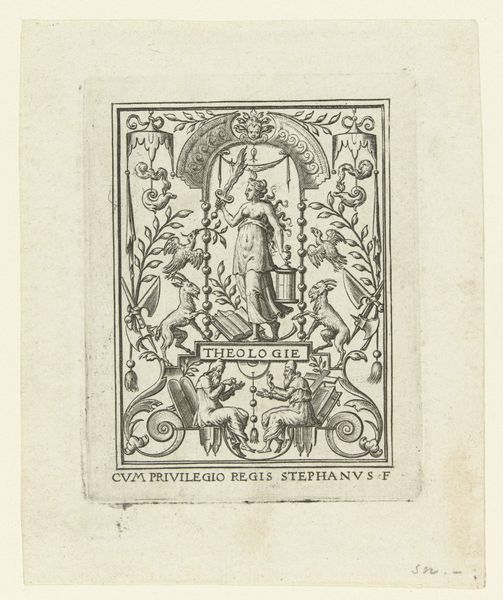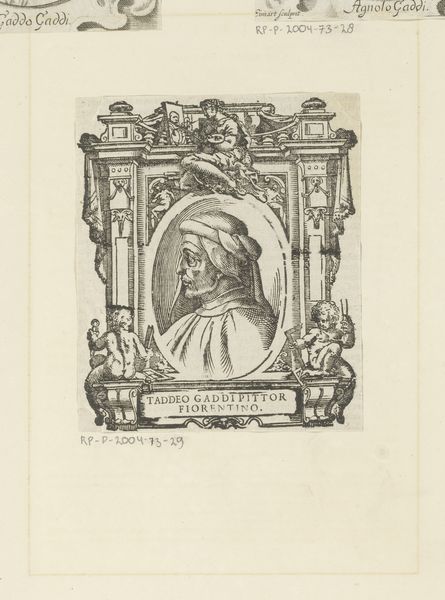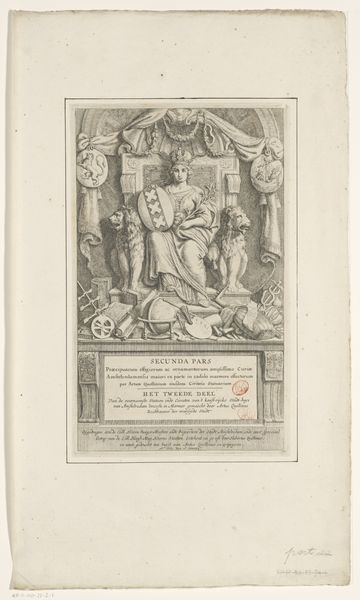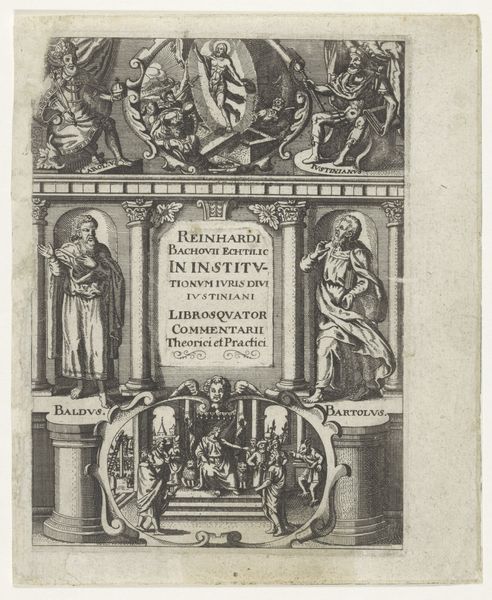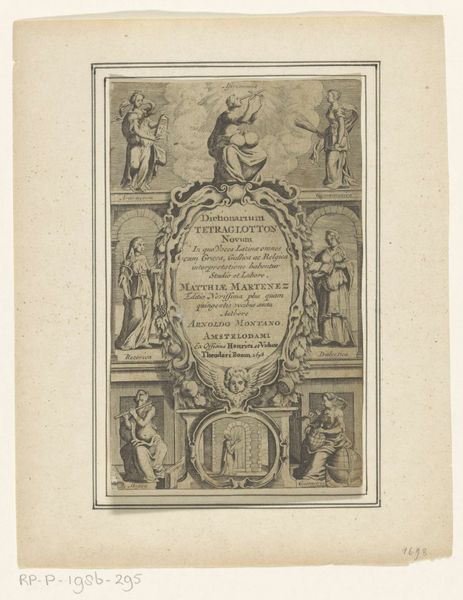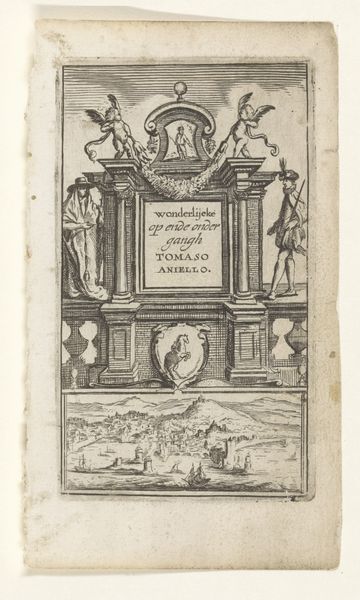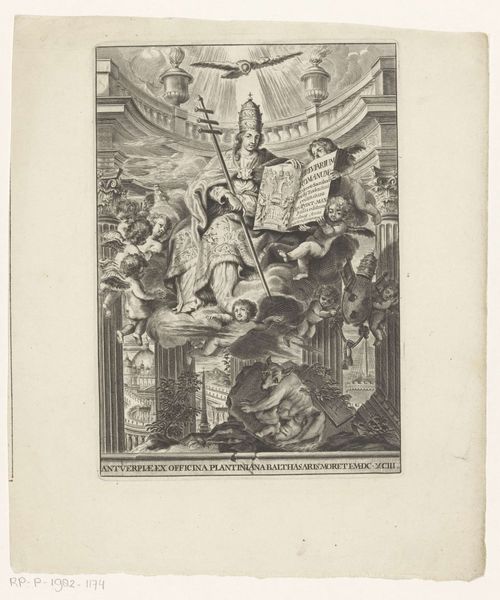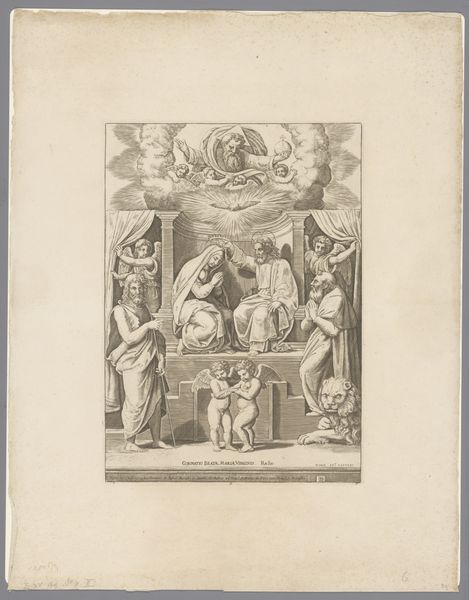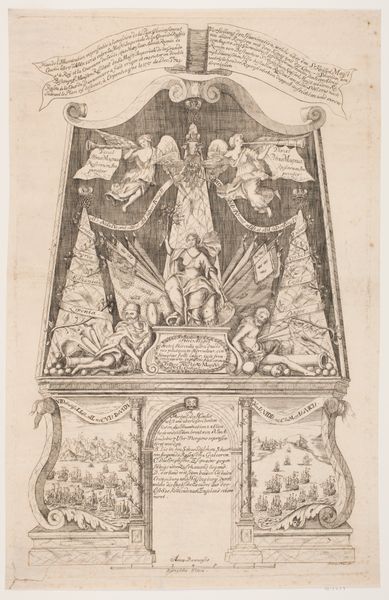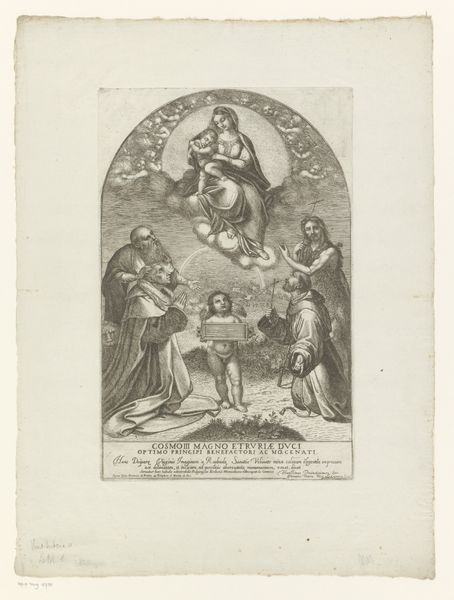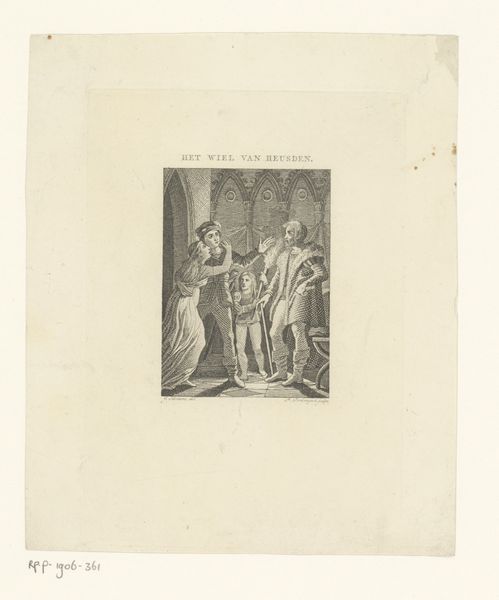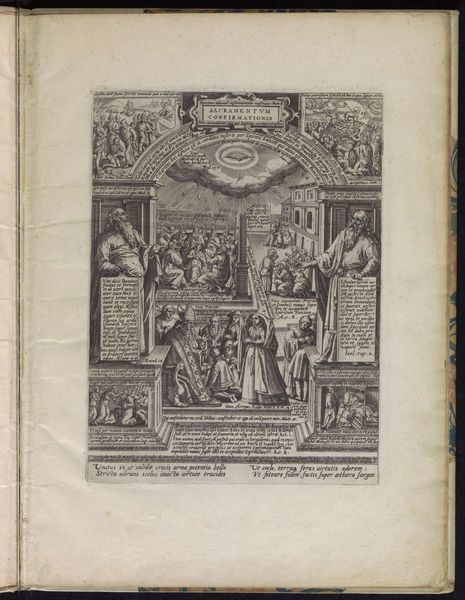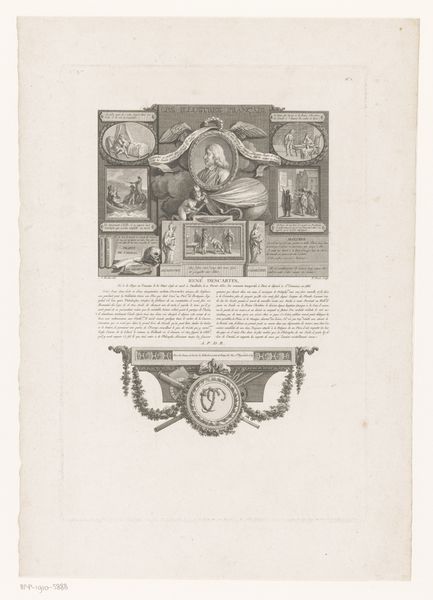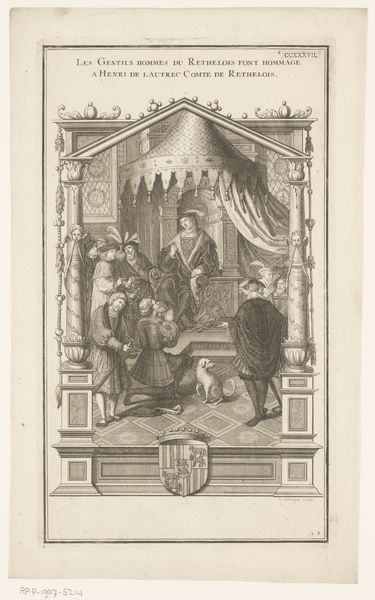
print, intaglio, paper, ink, engraving
#
allegory
#
baroque
#
dutch-golden-age
#
ink paper printed
# print
#
intaglio
#
old engraving style
#
paper
#
ink
#
history-painting
#
engraving
Dimensions: height 158 mm, width 69 mm
Copyright: Rijks Museum: Open Domain
Curator: This is an engraving from 1662, currently held in the Rijksmuseum, titled *Allegorische figuur op troon,* or "Allegorical figure on a throne." It is an anonymous print made with ink on paper, showcasing detailed intaglio work. Editor: It strikes me as quite formal, yet oddly compressed. The figure on the throne looks regal but the scene seems rather...stiff. Almost theatrical in its staging, doesn't it? Curator: I see your point about theatricality. Given that the print functions as an allegory, it's key to consider the societal impact of prints, allowing mass reproduction, as compared to unique oil paintings that, back then, catered exclusively to elite patronage. The materiality of printmaking meant the image reached wider social classes, influencing shared perceptions. Editor: That's fascinating. You're situating this particular allegory within a framework of broader social engagement facilitated by print culture. How might this widespread distribution have impacted its reception? I am struck by how this piece reflects the political dynamics of the era. What narratives were being reinforced by presenting such a stoic figure on a throne? Curator: I'd say that one narrative concerns power and perhaps commerce. See how it’s not only about who holds power but about access and means of production itself. Engraving isn’t just about replicating images; it becomes part of a system. It’s also essential to recognize the level of skill and time commitment. What sort of labor created the plate from which it was printed and distributed? Editor: I'd add to this examination of the work required that we ask *who* produced this print? And whose interests did that production serve? Also what kind of power dynamics and socio-economic contexts influenced the visual language? What assumptions about gender and governance might viewers have been expected to bring to it? Curator: Indeed, tracing the chain of creation opens an expansive field of investigation. So from a materialist positionality, what started off seemingly just "a print", we see as tied to larger dynamics related to artistic agency, social circulation, labor processes. Editor: Exactly, thinking about all these socio-historical influences gives a nuanced reading of that regal figure as the face of early modern Netherlandish power, and perhaps Dutch exceptionalism on a world stage. Curator: So, viewing beyond a surface, now you get more than just a stuffy scene! Editor: Indeed. It becomes a testament to the interplay between production, power, and societal perception in the Golden Age.
Comments
No comments
Be the first to comment and join the conversation on the ultimate creative platform.
